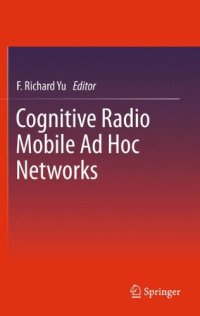
Ebook: Cognitive Radio Mobile Ad Hoc Networks
- Genre: Computers // Networking
- Tags: Communications Engineering Networks, Computer Communication Networks
- Year: 2011
- Publisher: Springer-Verlag New York
- Edition: 1
- Language: English
- pdf
Cognitive radio (CR) is one of today’s up-and-coming technologies. It facilitates communication because it creates greater efficiencies in mobile networks. CR allows unlicensed (secondary) users to exploit, in an opportunistic or ad hoc manner, the radio communications spectrum allocated to licensed (primary) users. CR is a promising potential solution to the problems caused by inflexibility in spectrum allocation policy, with attendant spectrum shortage.
The articles in this book come from leading experts in this field. They cover a range of aspects of modeling, analysis, design, management, deployment, and optimization of algorithms, protocols, and architectures of CR-MANETs.
Topics covered include
- distributed co-operative spectrum sensing
- spectrum hand-off
- medium access control
- topology control
- routing
- multimedia transmission
- cognitive vehicular networks
- cognitive health care networks
- interoperability
- game theoretic approach
The chapters cover major advances in research on cognitive radio mobile ad hoc networks for next-generation wireless communications systems. The book will be a vital resource for researchers and practitioners in this area, who will find the comprehensive referencing very useful.
Cognitive radios (CR) technology is capable of sensing its surrounding environment and adapting its internal states by making corresponding changes in certain operating parameters. CR is envisaged to solve the problems of the limited available spectrum and the inefficiency in the spectrum usage. CR has been considered in mobile ad hoc networks (MANETs), which enable wireless devices to dynamically establish networks without necessarily using a fixed infrastructure. The changing spectrum environment and the importance of protecting the transmission of the licensed users of the spectrum mainly differentiate classical MANETs from CR-MANETs. The cognitive capability and re-configurability of CR-MANETs have opened up several areas of research which have been explored extensively and continue to attract research and development. The book will describe CR-MANETs concepts, intrinsic properties and research challenges of CR-MANETs. Distributed spectrum management functionalities, such as spectrum sensing and sharing, will be presented. The design, optimization and performance evaluation of security issues and upper layers in CR-MANETs, such as transport and application layers, will be investigated.